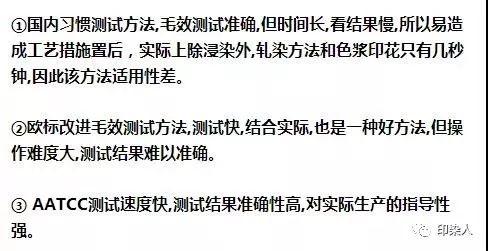The quality requirements of cotton fabric after scouring are measured by the capillary effect. In continuous dyeing or printing, the padding dye solution (or printing paste) of the fabric can be dyed (or printing process) in just a few seconds. . In order to combine production practices, various countries have developed different methods for testing gross effects.
Most factories in my country use the capillary effect method, which means that the distilled water on the fabric rises to a height within 30 minutes, which should generally reach more than 8cm. Some factory masters have also concluded in practice that the instantaneous penetration can be seen by dripping water. Good penetration means that the wool effect is good and can be dyed or printed.
Europe generally uses an improved rapid gross effect test method, which is the time required for distilled water to rise to a height of 1cm. The United States uses the AATCC rapid wool effect test method, that is, drip 0.5mL of water within 10 seconds, and observe the warp and weft diffusion width of the cloth surface in 30 seconds.
The following are respectively introduced: How to test the wool effect of semi-finished products?
There are many methods to test the gross effect of semi-finished products, but there are only three commonly used methods, namely the national standard test method, the European standard test method and the American standard test method.
The capillary effect of fabrics, unless the test conditions are specifically indicated, refers to the height reached by distilled water rising along the warp direction of the fabric for 30 minutes at room temperature (cm ).
(4) Comparative analysis of test methods:

Pay attention to several issues
1. In the above test methods, if the additives on the fabric are not removed cleanly, the accuracy of the test results obtained will often be will be reduced, and the surfactant on the test sample often causes the gross effect to be falsely high.
2. The results of the above test methods cannot accurately reflect the consistency of the entire wool effect of the fabric, but this deficiency can be made up by increasing testing points, or by using the national standard testing method. To test the difference in the overall gross effect of the semi-finished product.
3. In the American standard detection method, since the amount of distilled water added is fixed (0.5mL), the detection results of heavy fabrics will be relatively low.
4. The European standard detection method can reduce detection errors caused by operational factors by improving the test container.
5. In actual production, it is recommended to use the national standard test method to detect the entire wool effect of semi-finished products before pre-treatment, and use the American standard test method before dyeing. Test the instantaneous hair effect of semi-finished products. </p





